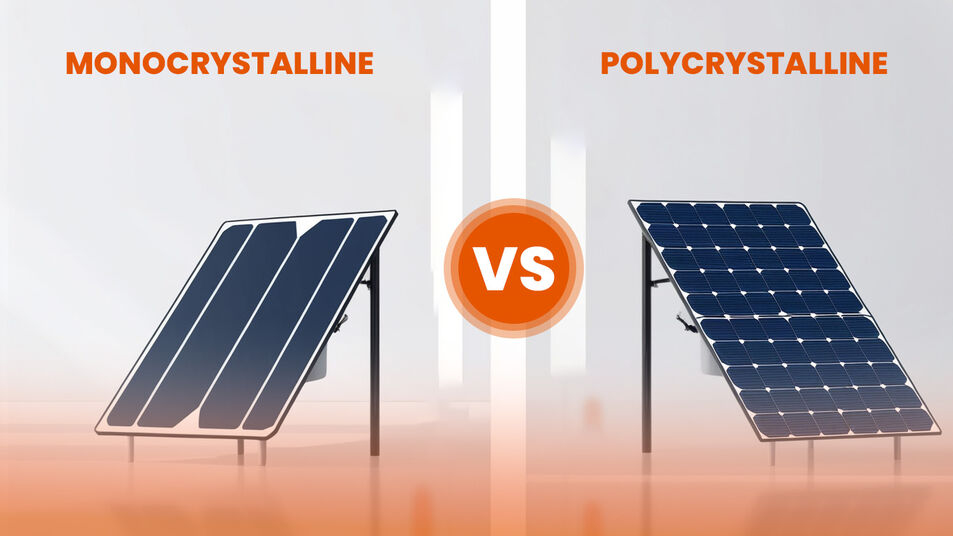Monocrystalline solar vs Polycrystalline solar – Ever wondered why some solar panels are black while others are blue? Or why do some panels seem to work better on cloudy days? You’re in the right place! This guide will walk you through the major solar technologies, breaking down what sets them apart and helping you make an informed choice. Solar panels come in all shapes and sizes (well, mostly rectangles), and the tech inside can vary more than you’d think.
Let’s dive into the basics.
Monocrystalline vs. Polycrystalline: What’s the Big Deal?
First off, both types of panels are made from silicon, the wonder material that conducts electricity when hit by sunlight. The difference between these two is how that silicon is sourced and shaped.
Monocrystalline Solar Panels
These panels are like the gold standard of solar cells. The silicon in them is cut from a single, solid crystal. The result? Super-efficient cells that perform better, especially in hot or low-light conditions. You’ll find these panels generating more power from the same amount of sunlight than their polycrystalline cousins.
Not only are monocrystalline panels better performers, but they also sport that sleek, all-black look that gives your rooftop a modern, clean aesthetic. The catch? They come with a higher price tag because they’re more expensive to make. The process involves shaving off the corners of the silicon wafers, which leads to some waste (and drives up costs). But if efficiency and looks matter to you, mono might be the way to go!
Polycrystalline Solar Panels
On the flip side, polycrystalline panels are created by blending silicon from multiple sources, which makes the manufacturing process more efficient and less wasteful. Fewer materials are lost, which means these panels come in cheaper than mono panels. They’ve got that recognizable blue tint, which comes from the multiple pieces of silicon used. If you zoom in, you might even notice the textured, uneven look of poly cells—think of them as a patchwork quilt of silicon.
In terms of efficiency, poly panels are just a bit behind mono. They have more imperfections on the surface of each cell, meaning they don’t convert sunlight into electricity quite as well. But if you’re budget-conscious and looking to cover a larger area, poly panels are a solid option.
Other Technologies
Solar tech doesn’t stop at mono and poly panels. Here’s a quick rundown of a few other cool innovations making waves:
Thin-Film Panels
These are like the budget-friendly cousins of traditional panels. They’re cheaper to produce but less efficient, which is why you’ll mostly see them in large commercial projects where space isn’t a concern.
N-Type vs. P-Type Cells
N-type cells are the marathon runners of the solar world—they resist light-induced degradation better than P-type cells. This means they’ll last longer and keep performing well over time.
PERC Cells
Ever wish your solar panels could absorb more light? PERC cells have got you covered. They include a reflective layer that gives them a second chance to catch any stray rays, boosting efficiency.
Half-Cut Cells
These split the standard solar cell into two, reducing resistance and increasing overall efficiency. Basically, they make your solar setup work smarter, not harder.
Bifacial Solar Panels
Why settle for one side when you can use both? Bifacial panels absorb sunlight from the front and back, making them perfect for open spaces where light can reflect off the ground.
Solar Innovation: Always Moving Forward
Solar manufacturers are constantly pushing the envelope to make their products more efficient and affordable. With so many options out there, choosing the right type of solar panel might feel overwhelming. But now that you know the basics, you’re in a great spot to pick the one that best suits your needs—whether you’re going for maximum efficiency, cost-effectiveness, or just the sleekest rooftop in the neighborhood.
At the end of the day, there’s no one-size-fits-all solution, but with these insights, you’re well on your way to solar success!




